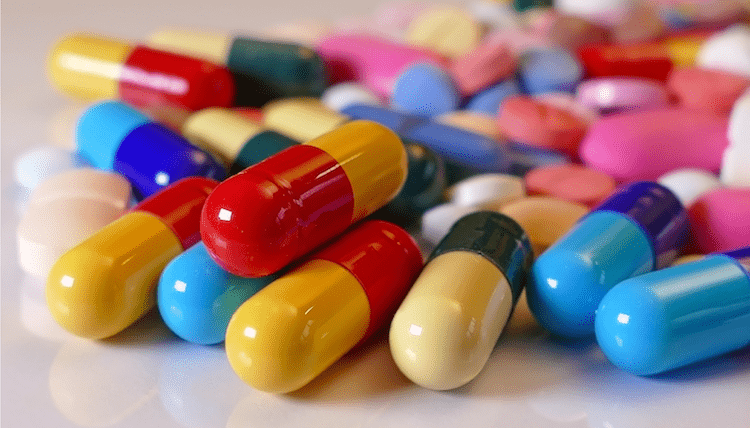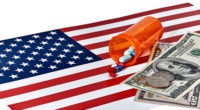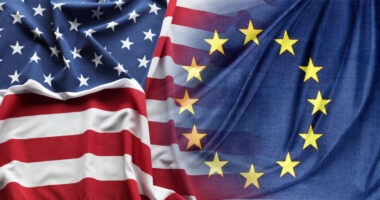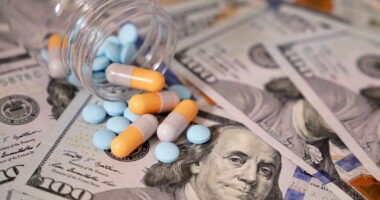US Generics Market: What Can Be Expected for 2019?
Pricing pressure and underperformance in the US generics market led several of the major generic-drug companies in 2018 to re-evaluate their businesses and put forth new strategies. Some companies say they are seeing signs of stabilization, but have market fundamentals changed?
Teva’s restructuring on track; says generics business is stabilizing
Teva Pharmaceutical Industries, which holds the number one position in the US generics market on a volume basis, says it is seeing signs of stabilization in its US and European generics business, in announcing its first-quarter 2019 results. The company initiated a major restructuring plan in late 2017 to address declining revenue from its generics business, large debt caused by its $40.5-billion acquisition of Allergan’s generic business in 2016 and subsequent weak performance in its generics business, and declining revenue from its number one specialty product, Copaxone (glatiramer acetate) for treating multiple sclerosis, which faced its own generic-drug competition.
In its first-quarter 2019 earnings release and investor call, Kåre Schultz, Teva’s President and Chief Executive Officer, announced that the company’s second year of its two-year restructuring program “got off to a promising start.” The company has a goal of reducing its annual spend by $3 billion to reach $13.3 billion in 2019 from its total spend of $16.3 billion in 2017. “We are on track to reduce our total cost base by $3 billion by the end of 2019, and we have achieved a reduction of $2.5 billion to date while continuing to lower our debt,” said Shultz in the company’s first-quarter 2019 earnings release on May 2, 2019. Since the announcement of the company’s restructuring in 2017, the company has reduced its global headcount by approximately 10,400 full-time-equivalent employees through re-organization and site consolidation of manufacturing facilities and administrative offices and Schultz said that further reductions of several thousand employees are expected during this year. The company’s net debt, still large, decreased by $500 million to $26.7 billion with $1.6 billion scheduled for repayment in 2019.
The company reported first-quarter 2019 revenues of $4.295 billion, a decrease of 15%, or 12% in local currency terms, compared to the first quarter of 2018, mainly due to generic competition to Copaxone and a decline in revenues from its respiratory products and US generics business. Overall, the company reported a net loss of $105 million in the first quarter of 2019 compared to income of $1.120 billion in the year-ago period.
On the generics side, Teva saw a 11% drop in its North American generics business in the first quarter of 2019 to $966 million from $1.088 billion in the year-ago period mainly due to market dynamics, price erosion in its generics business, and portfolio optimization, partially offset by new generic product launches. In the first quarter of 2019, Teva said it led the US generics market in total prescriptions and new prescriptions, with approximately 436 million total prescriptions (based on trailing twelve months), representing 12% of total US generic prescriptions according to IQVIA data. In Europe (the European Union and certain other European countries), Teva’s generics sales declined 8% to $919 million in the first-quarter of 2019 compared to $997 million in the first quarter of 2018. In other international markets (all countries other than those in its North American and Europe segments, principally including Israel, Japan and Russia), revenues from generics were down 10% to $441 million from $488 million.
Despite the continued revenue fall in its generics business, Schultz said in a call with investors in commenting on the company’s first-quarter 2019 results that “we have seen a stabilization of US generics and European generics, so that means we are seeing a stabilization of our globalized generics business.” With a restructuring plan aimed at taking action to stop the declining value of its US generics business, the company decided to streamline its portfolio of generics and not sell products at a loss. He added that the company started to see “signs of stabilization” in its first-half 2018 results and later in its full-year 2018 results and now its first-quarter 2019 results. “We now have five quarters in a row where the North American generics business is around $1 billion in revenues per quarter, and where the European revenue is around $900 million, and of course with some exchange rate swings. So that’s important that it has worked. We are now having a stable business in our generics…,” said Shultz. For the full-year 2018, Teva reported revenues in its North American generics business of $4.056 billion, down from $5.203 billion in 2017 and $4.654 billion in 2016. Revenues from its European generics business in 2018 were $3.593 billion compared to $3.471 billion in 2017.
In terms of its generics pipeline in the US, the company has 284 product applications awaiting approval by the US Food and Drug Administration, including 93 tentative approvals. Excluding overlaps, the branded products underlying these pending applications had US sales for the twelve months ended December 31, 2018 exceeding $117 billion, according to IQVIA, and as reported by Teva.
Mylan still exploring strategic alternatives for its US generics business
For Mylan, the company reported a decline in first-quarter revenues in 2019 as it continues to explore alternatives for its North American generics business. In August 2018, Mylan formed a strategic review committee to evaluate alternatives for its businesses following weak performance in its North American segment. The company said at the time the profile of the company had changed over the last several years by shifting from a core US-centric operation to an international presence. In the first quarter of 2019, Mylan reported total revenues of $2.50 billion, down 7% compared to the prior-year period. In the first quarter of 2019, the company reported North America segment net sales of $922.9 million, down 6% on an actual and constant currency basis, primarily driven by changes in the competitive environment and the impact of plant-remediation activities at is site in Morgantown, West Virginia. During the second quarter of 2018, the company began comprehensive restructuring and remediation activities, which included reducing the complexity at its Morgantown plant and discontinuing and transferring a number of products to other manufacturing sites. European segment net sales were $895.3 million, down 14% (6% on a constant currency basis) in comparing first-quarter results in 2019 and 2018. Rest-of-world segment net sales were $642.4 million in the first quarter, up 3% (11% on a constant currency basis).
On an investor call on May 7, 2019, Mylan CEO Heather Bresch said that the company continues its plan of diversification in its product portfolio, pipeline, and geographies. Overall, she said the company has met two-thirds of its goal of $1.1 billion in new product launches in 2019, which includes securing almost all of the necessary regulatory approvals for such products. The company notes that this target consists of products approved and launched in 2018 and to be further rolled out in 2019, approval of Wixela Inhub (fluticasone propionate and salmeterol inhalation powder), a generic version of GlaxoSmithKline Plc’s Advair Diskus inhaler, which was approved by the US Food and Drug Administration in January 2019, and other product launches in 2019. She added that the company has confidence in its North American segment, in which she says the market has weathered “unprecedented volatility.” She noted that the US generics market is composed of three main segments: commodity, complex, and specialty, and each segment faces unique challenges and has required adaption by the company to address those challenges. In commodity generics, she pointed to increased pricing pressure and accelerating competition. For complex generics, she pointed to challenges in generics uptake due to formulary design and preferred coverage status for branded drugs, and for specialty generics, which includes biosimilars, she points to limited incentives for generics uptake and the need for public policy reform to create a generic tier for specialty drugs. Anthony Mauro, Mylan’s Chief Commercial Officer, further commented that on a market level, he has seen some stabilization in the US generics market that began in the latter part of 2018, which has carried over into 2019.
Bresch noted that the company has formalized a business transformation office to evaluate the economic contributions from its business in an effort to achieve cost efficiencies and optimal capital allocation. She added that the review is being undertaken at a product and/or product family level and that the conclusions from that evaluation will be presented later this year at the company’s Investors’ Day with more specific measures expected to be implemented in 2020. This evaluation is distinct from the company’s strategic review, initiated last August (2018), by a separate strategic review committee, with Bresch saying that review would be expected in “the near term.”
Novartis continues with divestment of generic US oral solids portfolio
For its part, Novartis continues to move forward with plans for its generics business, Sandoz, which includes its previously announced divestiture of Sandoz’ US dermatology business and generic US oral solids portfolio to Aurobindo Pharma USA for $1 billion. Novartis announced the deal last September (2018) as part of its strategy to focus on complex generics, value-added medicines, and biosimilars in order to achieve sustainable and profitable growth in the US over the long term. In its first-quarter earnings release on April 24, 2019, Novartis said it expects the deal to be completed during 2019, pending closing conditions including regulatory approvals.
The move comes as the company continues to face pricing pressure in the US generics market and seeks to put into place a new head for the business. In the first-quarter of 2019, Novartis reported a 2% decline (in constant currency) in its Sandoz business due to continued US price pressure to $2.326 billion from $2.517 billion in the year-ago period. As part of its transformation of its Sandoz business, the company appointed Richard Saynor as CEO of Sandoz, effective no later than August 1, 2019. He will be a member of the Executive Committee of Novartis and report to Vas Narasimhan, CEO, Novartis. Saynor is currently Senior Vice President, Classic & Established Products, Commercial & Digital Platforms at GlaxoSmithKline. He has more than 20 years of global leadership experience spanning both generics and established pharmaceutical brands. He currently manages a $10-billion established products portfolio that comprises over 350 brands commercialized in over 120 countries.
Other companies move ahead with plans for generics businesses
Perrigo is also moving ahead with plans for its generics business. In August 2018, Perrigo announced plans to separate the company’s prescription pharmaceuticals business, which consists primarily of generics, following a strategic portfolio review due to weak performance. A separation of its Rx business would leave the company’s primary focus on consumer healthcare or over-the-counter (OTC) products. Perrigo’s prescription pharmaceutical business develops, manufactures, and markets a portfolio of generic prescription drugs primarily in the US. The company said at the time of the announcement that it was considering all value-enhancing options, including a possible tax-efficient separation to shareholders, a sale or merger.
Perrigo reported Rx drug fourth-quarter net sales of $222 million, down 15% year-over-year; a sequential improvement versus third quarter 2018 results due to new products and decelerating pricing pressure. Perrigo President and CEO Murray S. Kessler will provide an update on the company’s plans for portfolio reconfiguration, capacity and technology investments, innovation initiatives, cost-savings plans, capital-allocation plans, organizational-effectiveness initiatives and financial guidance at the company’s investor conference later this week (May 9, 2019).







